 W
WThe Baroque fortifications in the Black Forest, also called Baroque Schanzen (Barockschanzen) or Black Forest lines (Schwarzwaldlinien), are historical, military earthworks, known as schanzen, that were built in the Black Forest in what is now Germany. They were built in the 17th century to defend the Margraviate of Baden from French invasion. Together with their adjoining defensive lines, the Black Forest fortifications formed a defensive system over 200 kilometres long that ran from north to south.
 W
WBurg Dagestein is a castle in the city of Vilseck in the Oberpfalz region of northeastern Bavaria, Germany.
 W
WThe Dömitz Fortress is a bastion fort in Dömitz, Mecklenburg-Vorpommern, Germany. It was built by John Albert I, Duke of Mecklenburg-Güstrow, between 1559 and 1565, to secure Mecklenburg's border. The fort saw use during the Thirty Years' War and the Napoleonic Wars, and it was decommissioned in 1894. The fort is now in good condition, and it has been a museum since 1953. It is one of the few well-preserved 16th-century flatland forts in Northern Europe.
 W
WThe Eppingen lines were a fortified defensive line, which stretched from Weißenstein near Pforzheim via Mühlacker, Sternenfels, Eppingen to Neckargemünd in southern Germany. It had a total length of 86 kilometres.
 W
WThe Ettlingen Line or Lower Line was a defensive line built in 1707 during the War of the Spanish Succession from brushwood (Verhauen) and palisades, which replaced the 1701 Bühl-Stollhofen Line after that had been destroyed in May 1707 and levelled by French troops.
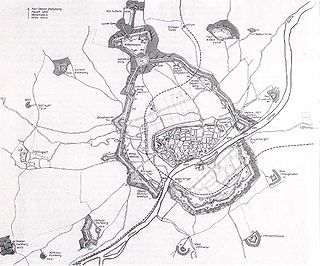 W
WThe fortress of Ulm was one of five federal fortresses of the German Confederation around the cities of Ulm and Neu-Ulm. With its 9 km polygonal main circumvallation Ulm had the biggest fortress in Germany in the 19th century and it is still one of the biggest in Europe.
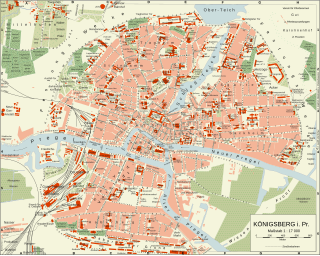 W
WFort Friedrichsburg or Feste Friedrichsburg was a fort in Königsberg, Germany. The only remnant of the former fort is the Friedrichsburg Gate in Kaliningrad, Russia.
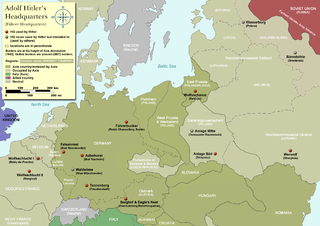 W
WThe Führer Headquarters, abbreviated FHQ, were a number of official headquarters used by the Nazi leader Adolf Hitler and various other German commanders and officials throughout Europe during the Second World War. The last one used, the Führerbunker in Berlin, where Hitler committed suicide on 30 April 1945, is the most widely known headquarters.
 W
WGrauerort fortress is a German artillery fort on Elbe river about 9 km (5.6 mi) north of Stade which was built between 1869 and 1879 to defend the Port of Hamburg. Its shape is hexagonal, taking advantage of the topography of the area and the location of the previously existing levee. The main armament of the fort were probably ten 21 cm breech-loading guns, but they are no longer in place. There were also 4 12 cm and six 9 cm guns. Construction materials were cement and brick; concrete was only used from 1885 onward.
 W
WLandestrost Castle is a castle in the Weser Renaissance style that was built between 1573–84 in Neustadt am Rübenberge in the north German state of Lower Saxony. Integrated into fortifications, together with the town, it developed into an urban fortress typical of the 16th century. The castle was the representative residence and administrative headquarters of its master, Duke Eric II of Brunswick-Lüneburg. During the construction period from 1574 he renamed the town of Neustadt as Landestrost, something which was reverted after his death in 1584.
 W
WLichtenau Fortress is a former fortification built by the Nuremberg castellans in the market town of Lichtenau in Middle Franconia.
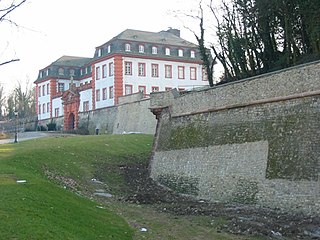 W
WThe Mainzer Zitadelle is situated at the fringe of Mainz Old Town, near Mainz Römisches Theater station. The fortress was constructed in 1660 and was an important part of the Fortress Mainz.
 W
WMaybach I and II were a series of above and underground bunkers built 20 kilometres south of Berlin in Wünsdorf near Zossen, Brandenburg to house the High Command of the Army and the Supreme Command of the Armed Forces during the Second World War. Along with the military fortress complex Zossen, Maybach I and II were instrumental locations from which central planning for field operations of the Wehrmacht took place, and they provided a key connection between Berlin’s military and civilian leadership to the front lines of battle. The complex was named after the Maybach automobile engine.
 W
WRastatt Fortress was built from 1842 to 1852. The construction of this federal fortress was one of the few projects that the German Confederation was able to complete. The fortress site covered the Baden town of Rastatt and, in 1849, played an important role during the Baden Revolution. It was abandoned in 1890 and most of it was eventually demolished.
 W
WRothenberg Fortress is a fortress on the eponymous hill, 588 m, near Schnaittach in the Franconian Jura.
 W
WThe Spandau Citadel is a fortress in Berlin, Germany, one of the best-preserved Renaissance military structures of Europe. Built from 1559–94 atop a medieval fort on an island near the meeting of the Havel and the Spree, it was designed to protect the town of Spandau, which is now part of Berlin. In recent years it has been used as a museum and has become a popular tourist spot. Furthermore, the inner courtyard of the Citadel has served as an open air concert venue in the summertime since 2005..
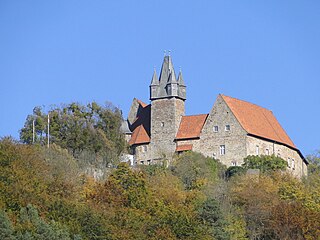 W
WSpangenberg Castle is a schloss above the small German town of Spangenberg in the North Hesse county of Schwalm-Eder-Kreis. The originally Gothic building was first a medieval fortified castle, then a fortress, hunting lodge, prison, forestry school and is now a hotel and restaurant.
 W
WVitrified forts are stone enclosures whose walls have been subjected to vitrification through heat. It was long thought that these structures were unique to Scotland, but they have since been identified in several other parts of western and northern Europe.
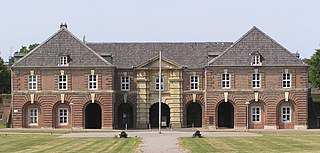 W
WThe Wesel citadel is the largest intact fortification system of the Rhineland and was built 1688–1722 in Wesel according to plans by Johan de Corbin, in the form of a pentagonal star, with each point of the star being a bastion. The citadel was the core of the fortress of Wesel. It is currently used as a cultural centre.
 W
WThe Willibaldsburg is a spur castle, built around the year 1353, in Eichstätt in Upper Bavaria. Until the middle of the 18th century it was the representative castle and seat of Eichstätt's prince-bishops.
 W
WWülzburg is a historical fortress of the Renaissance-age in Germany. It is about 2 kilometres (1.2 mi) east of the center of Weißenburg in Bayern. It stands on a hill 200 metres (660 ft) above Weißenburg, at an elevation of 630.5 metres (2,069 ft), and was originally a Benedictine monastery dating from the 11th century.